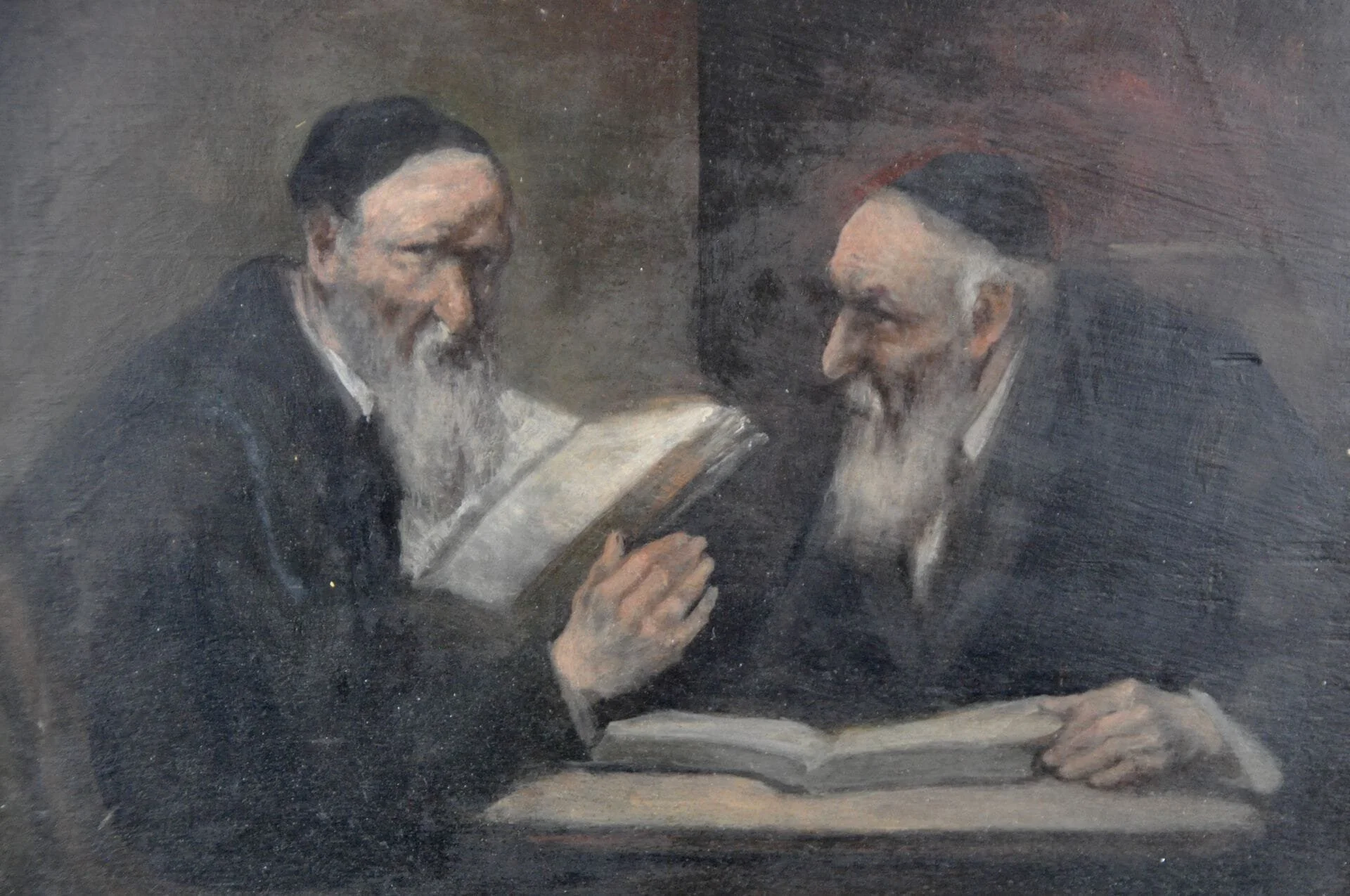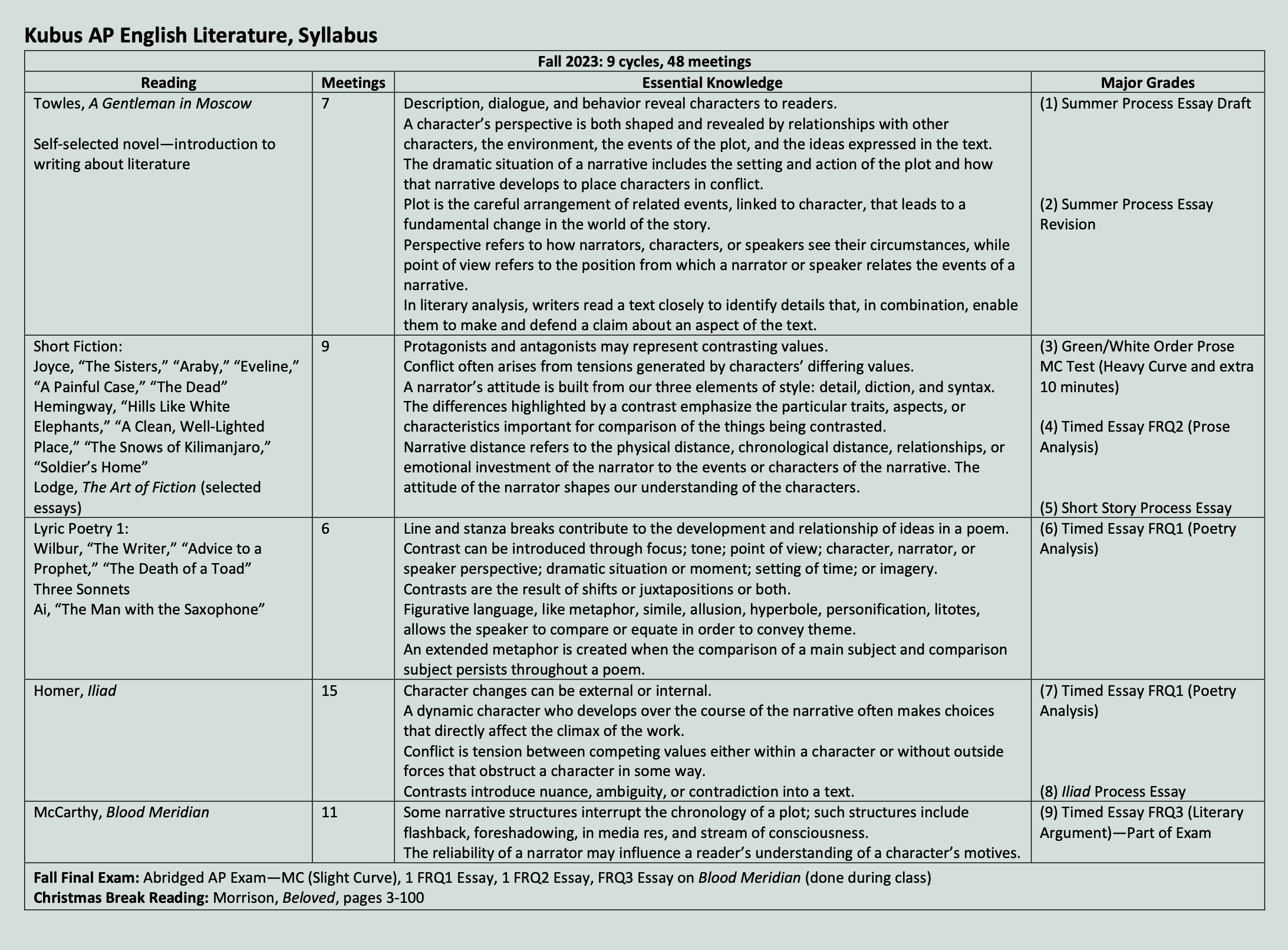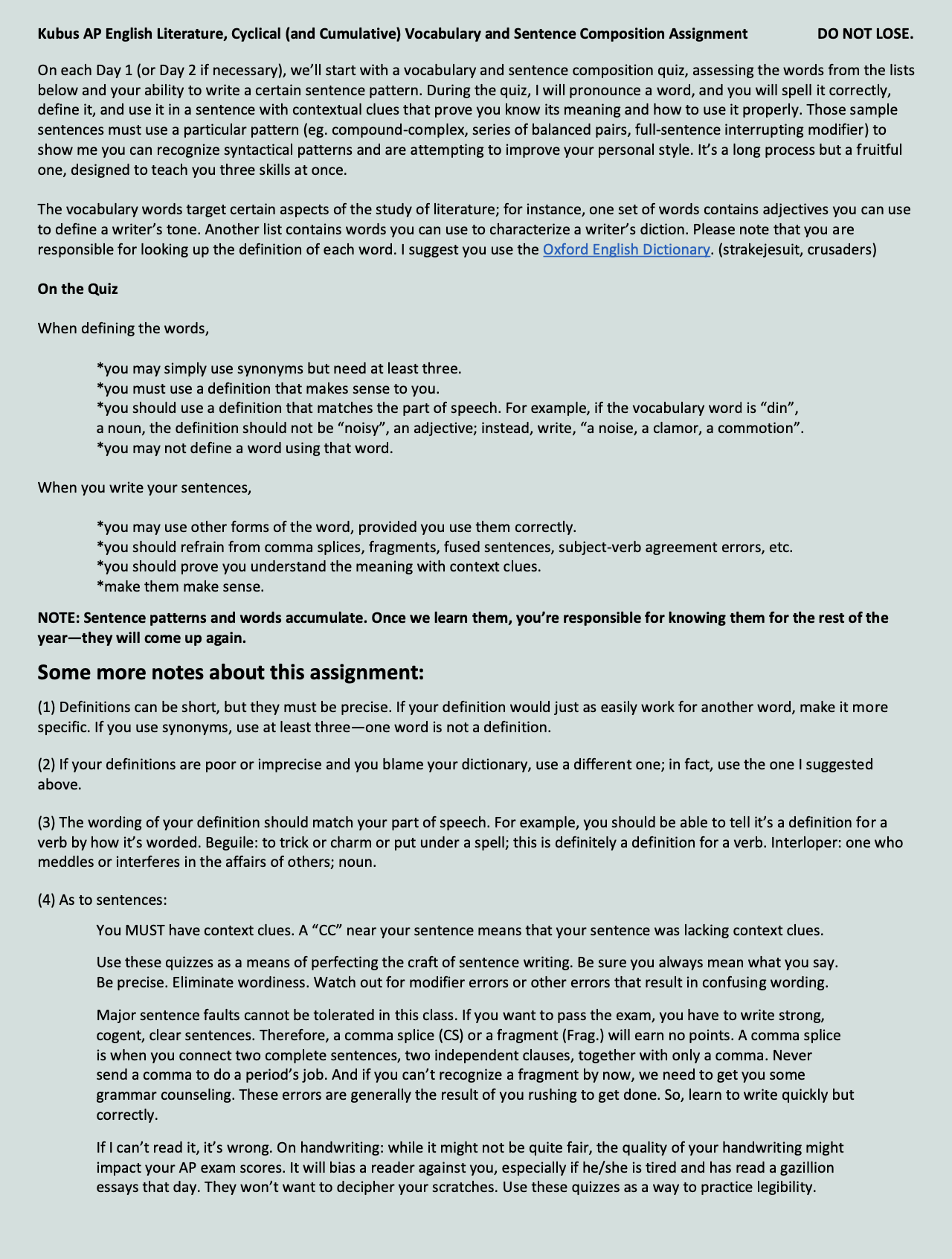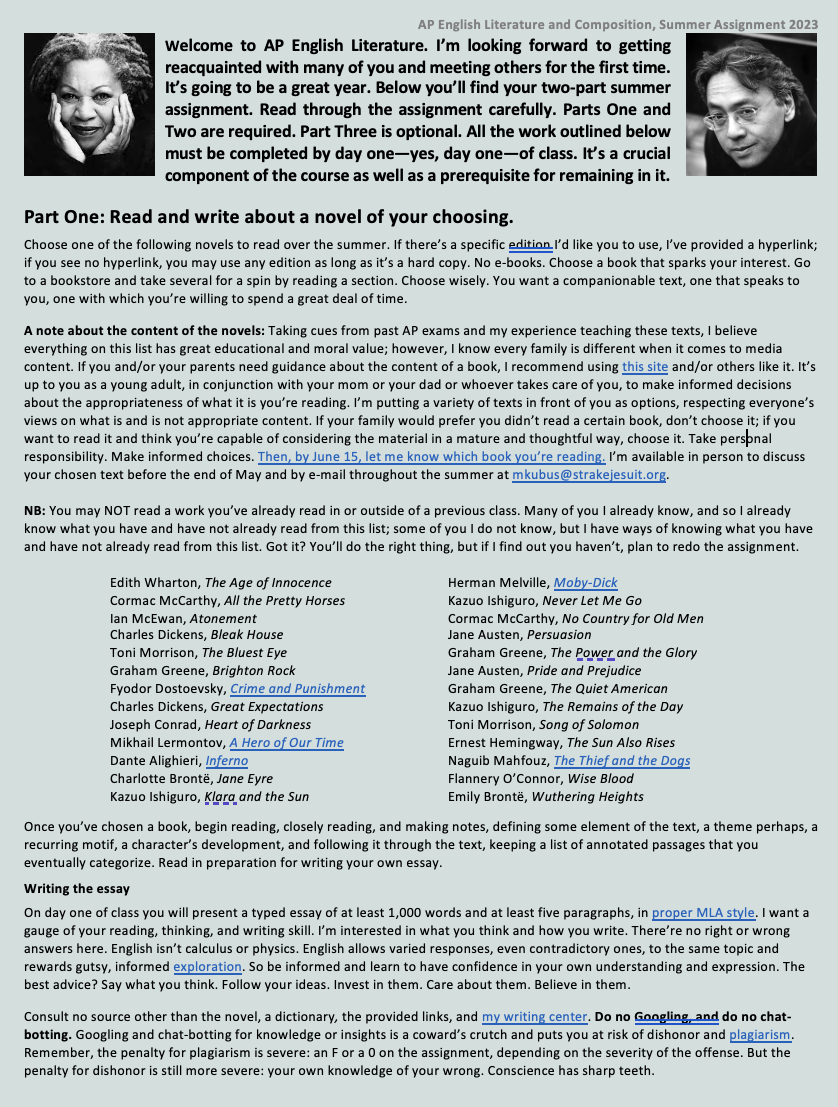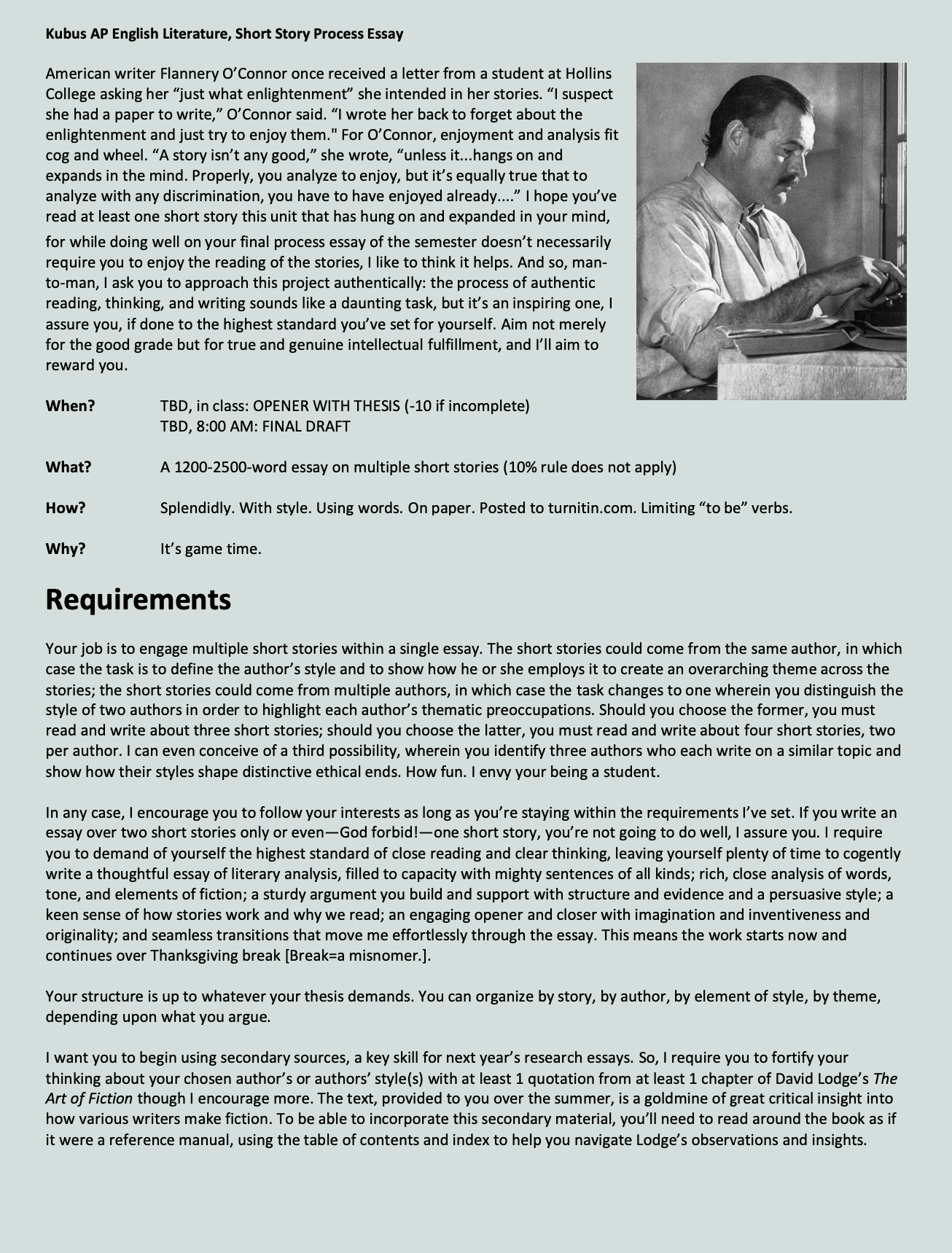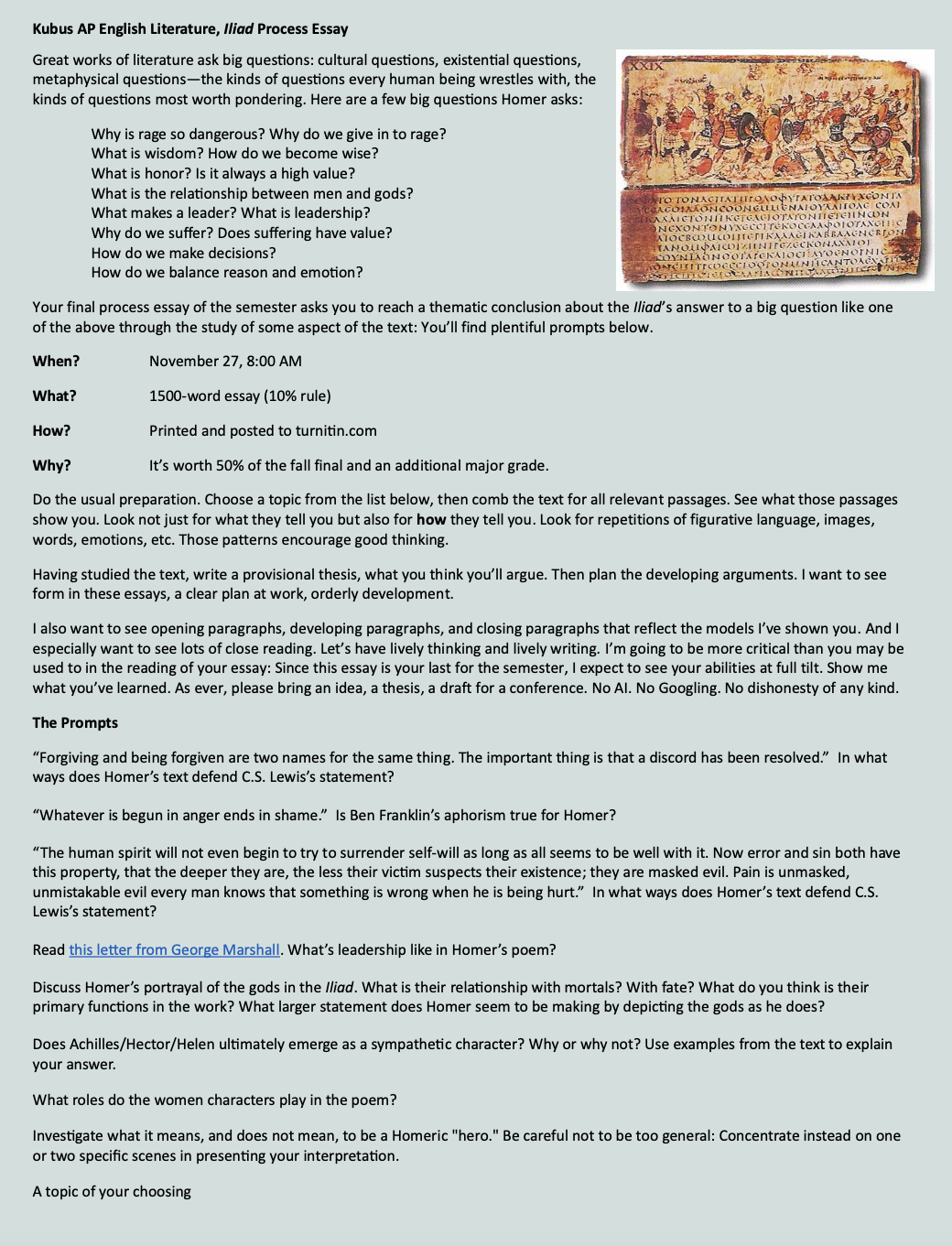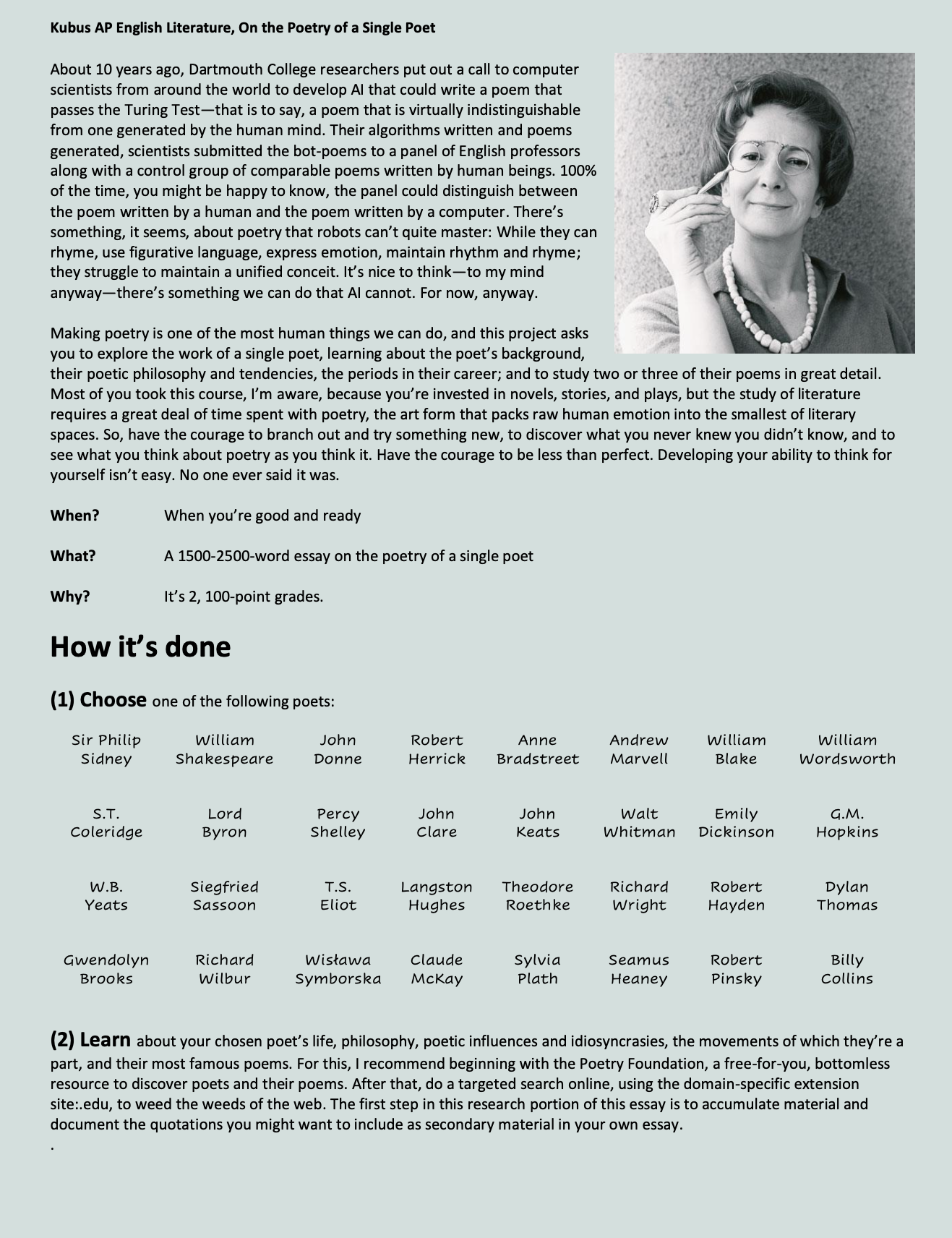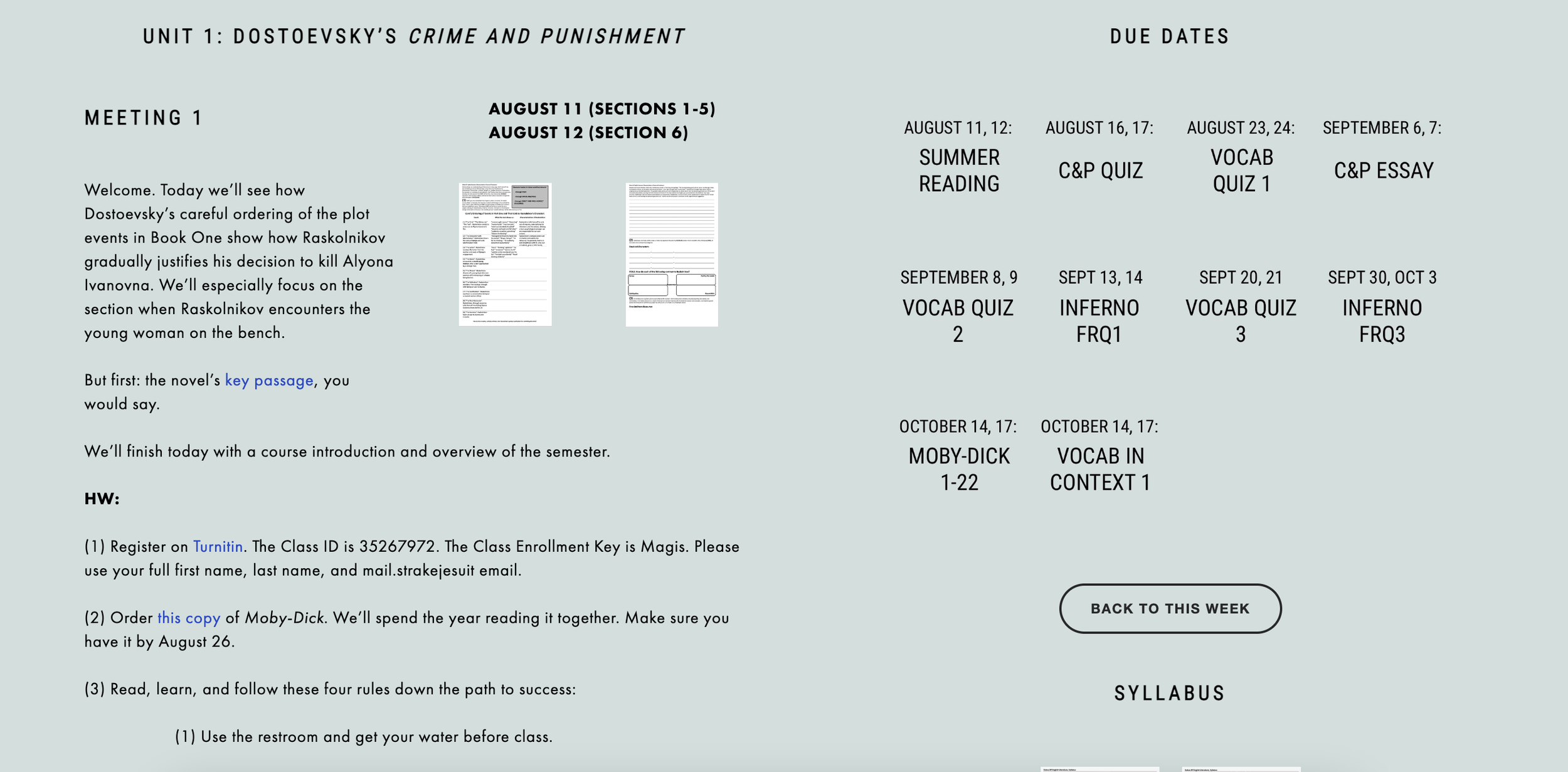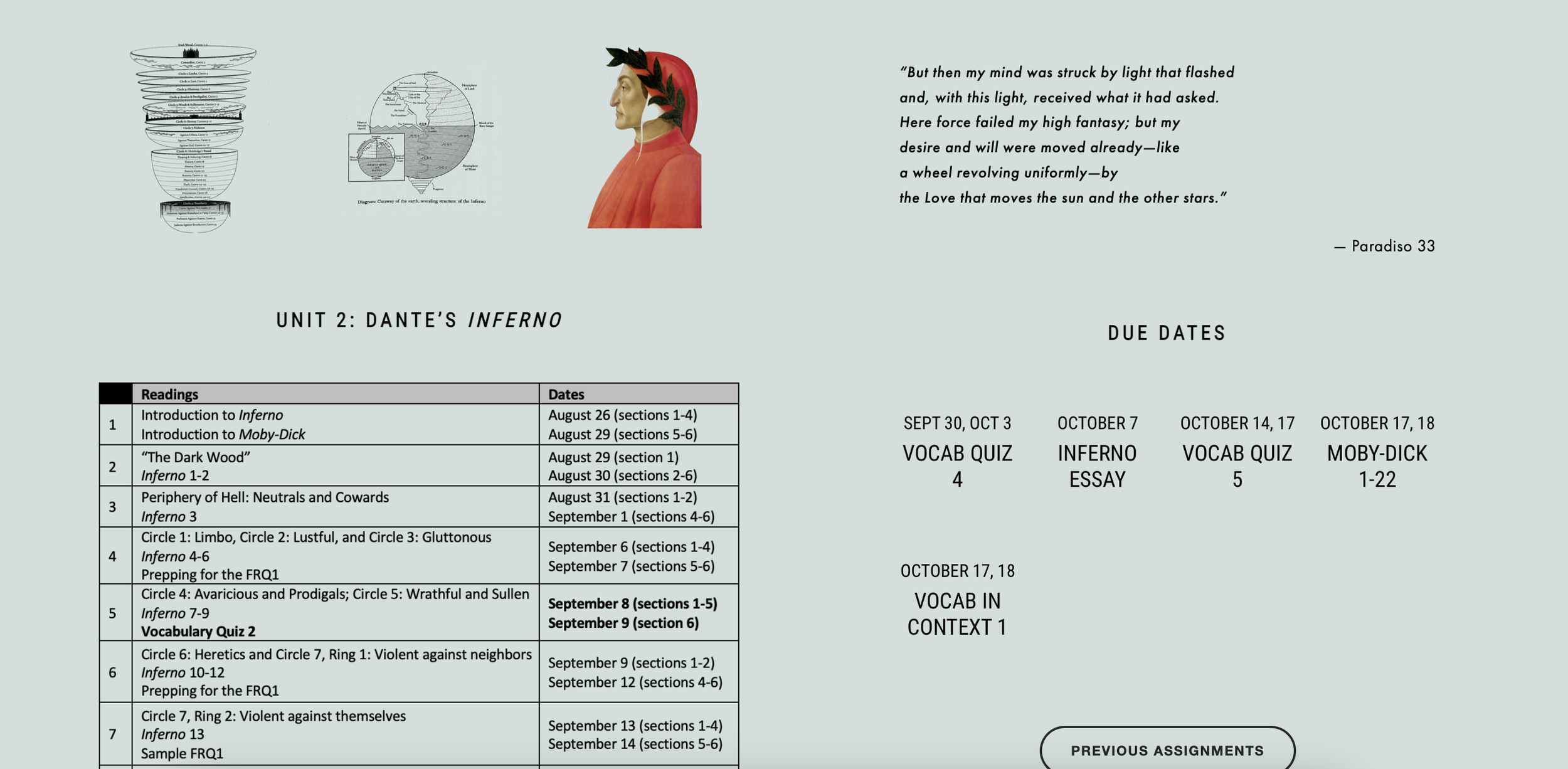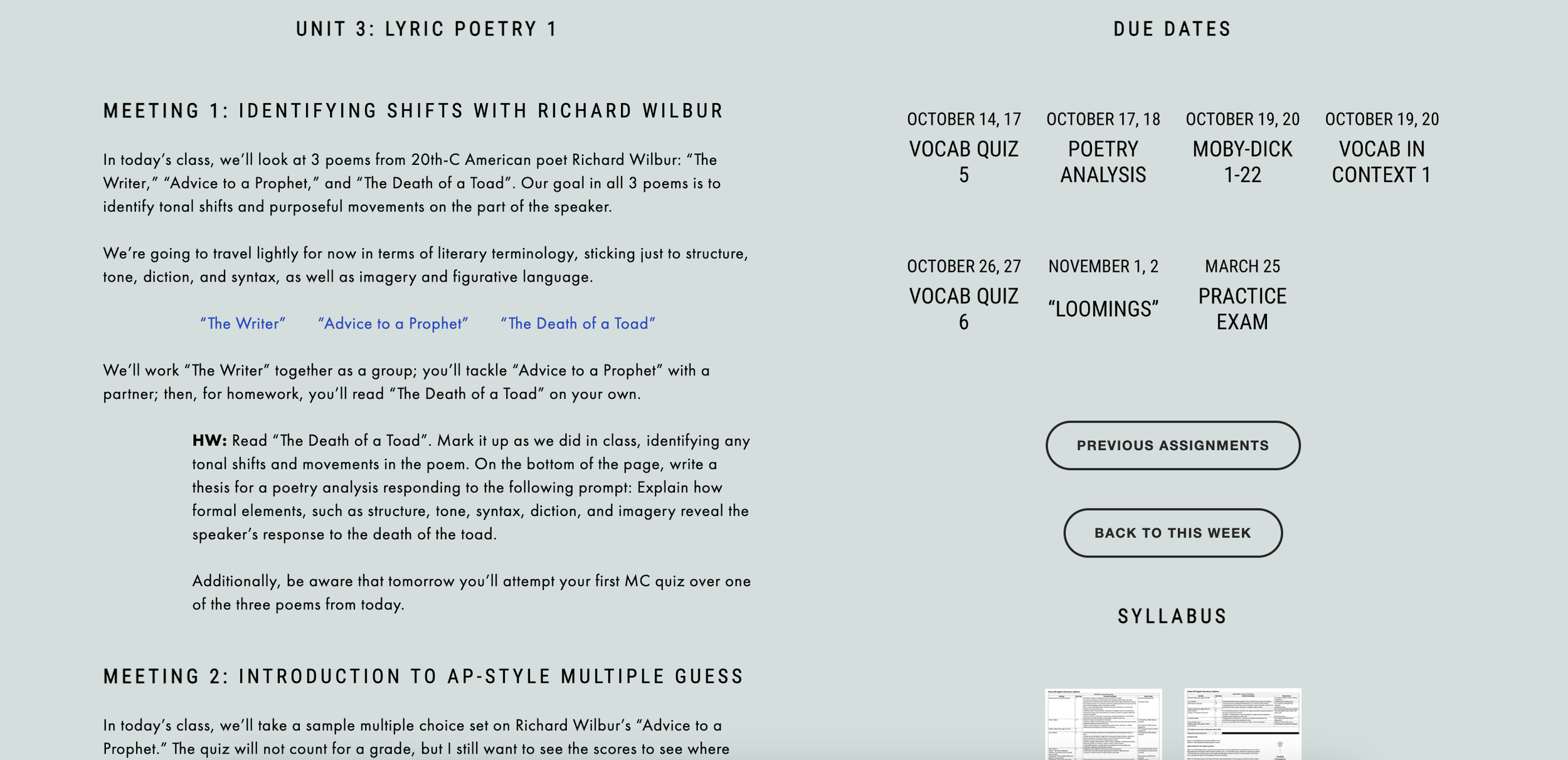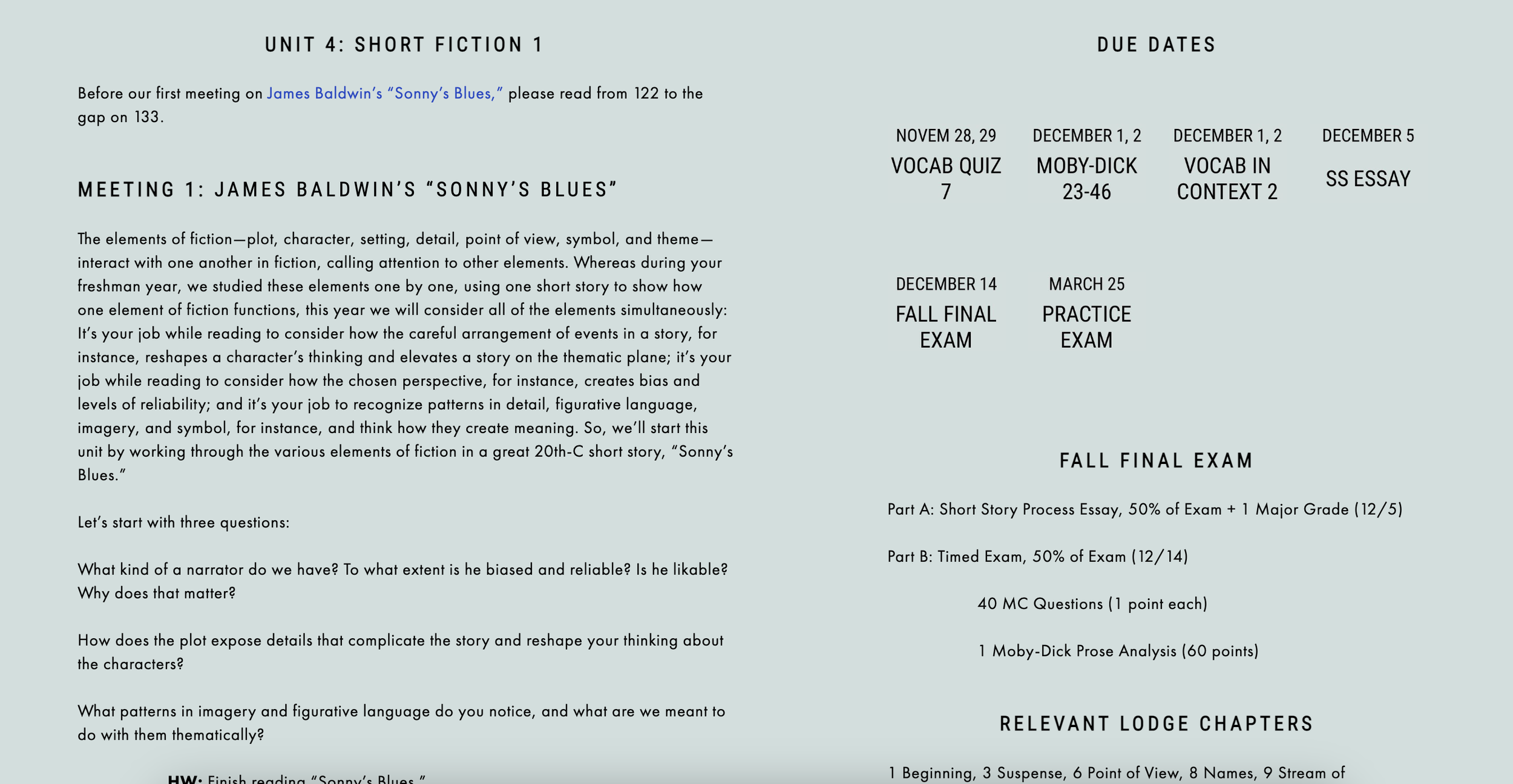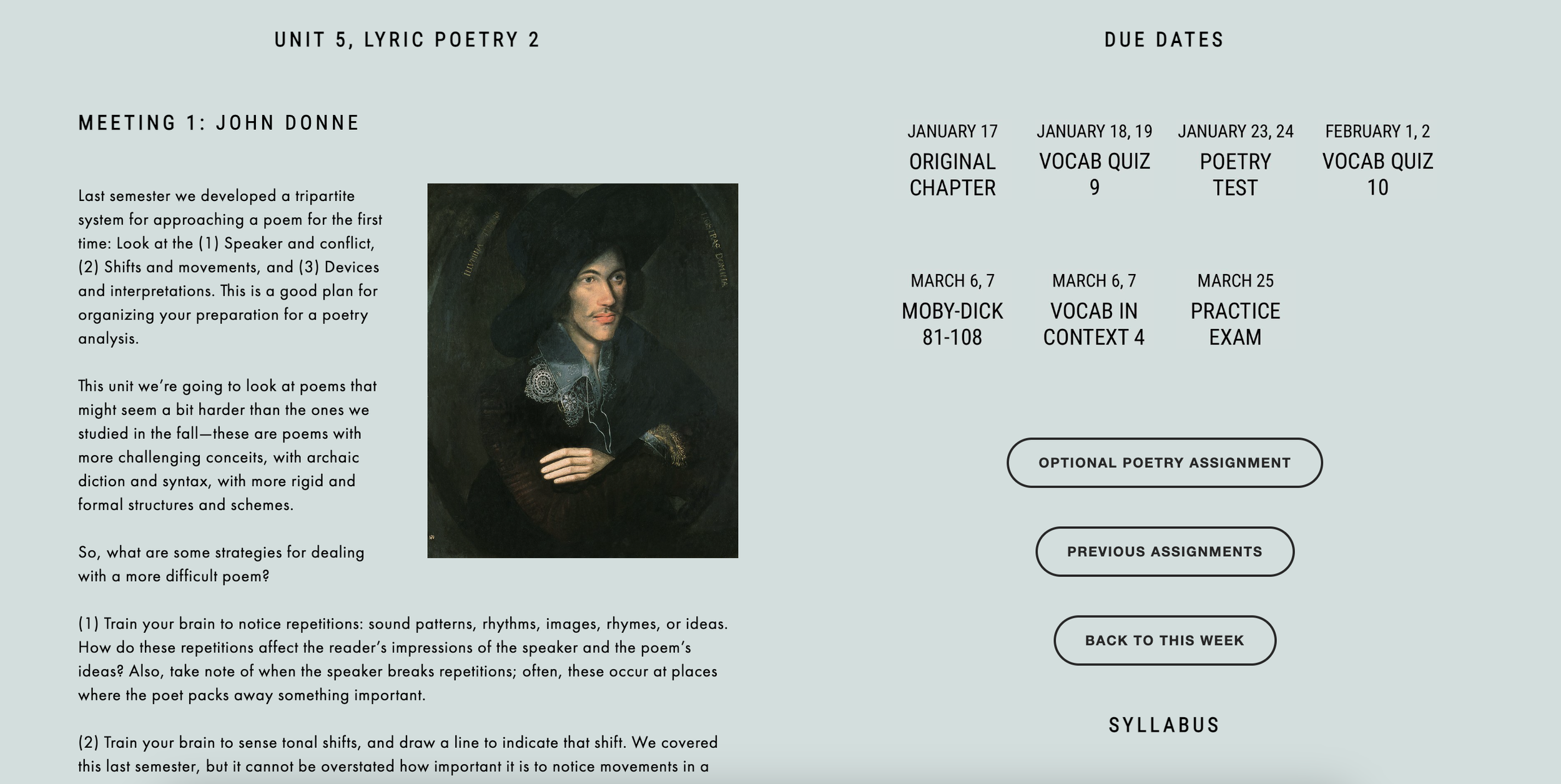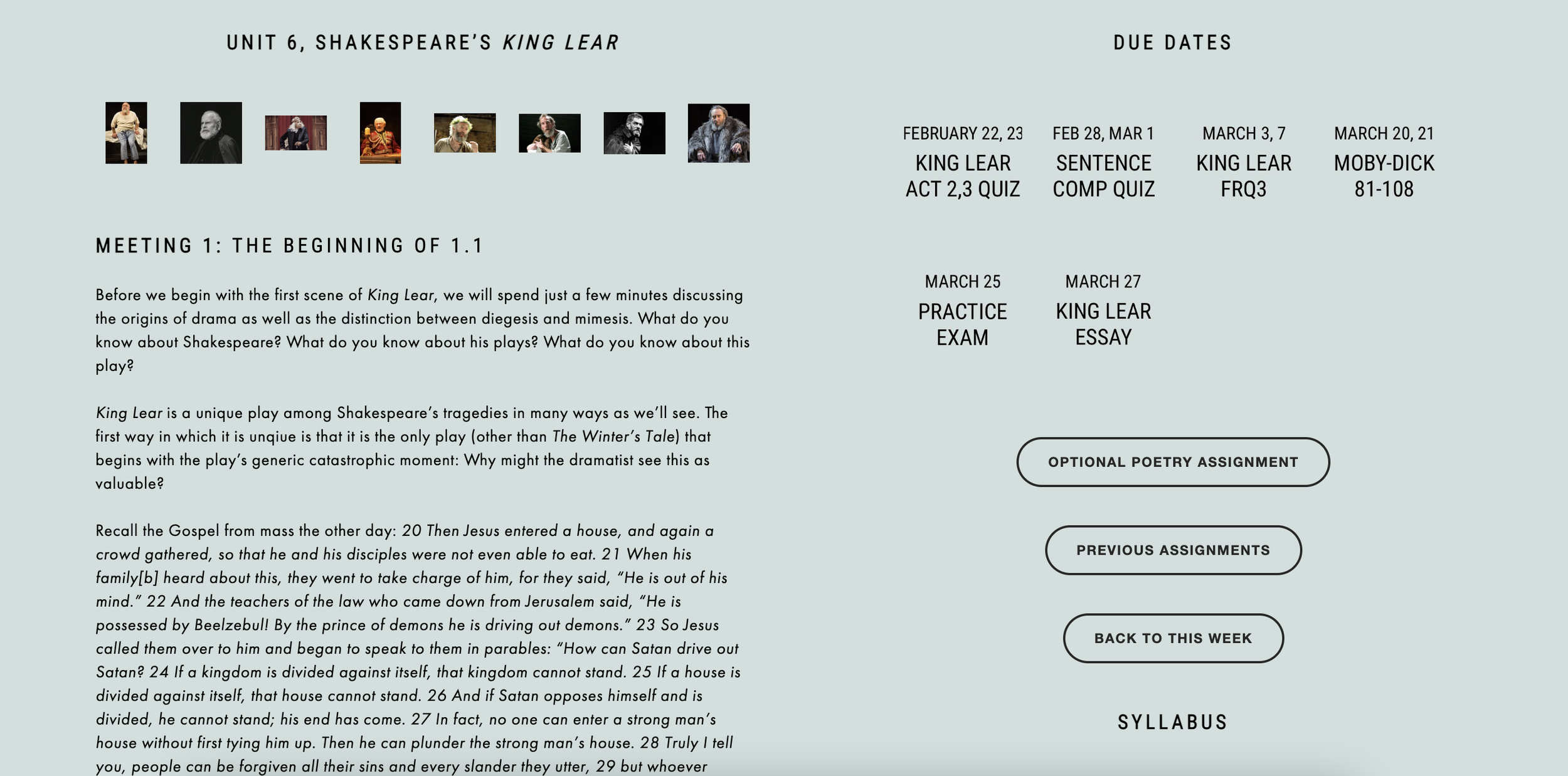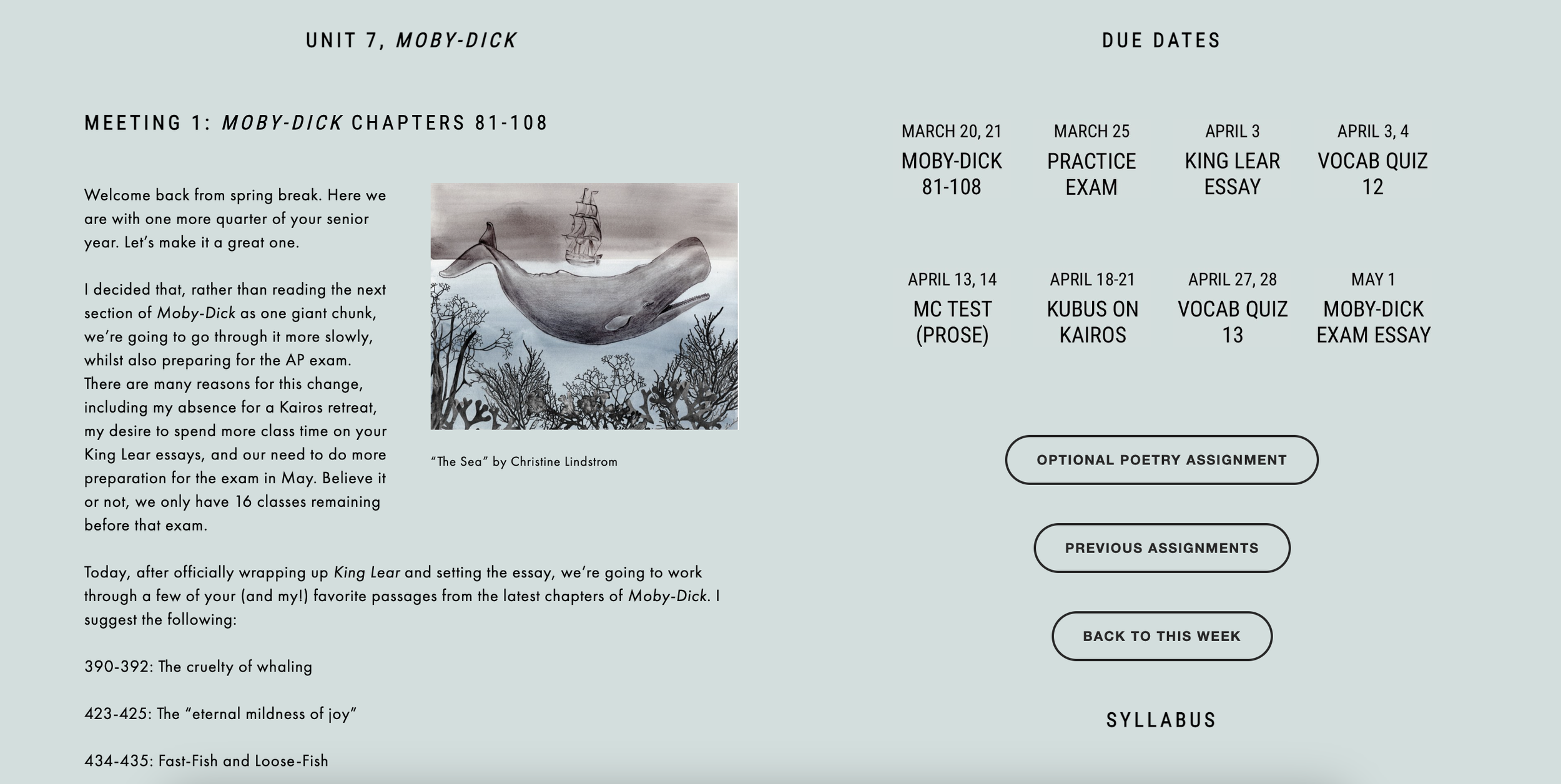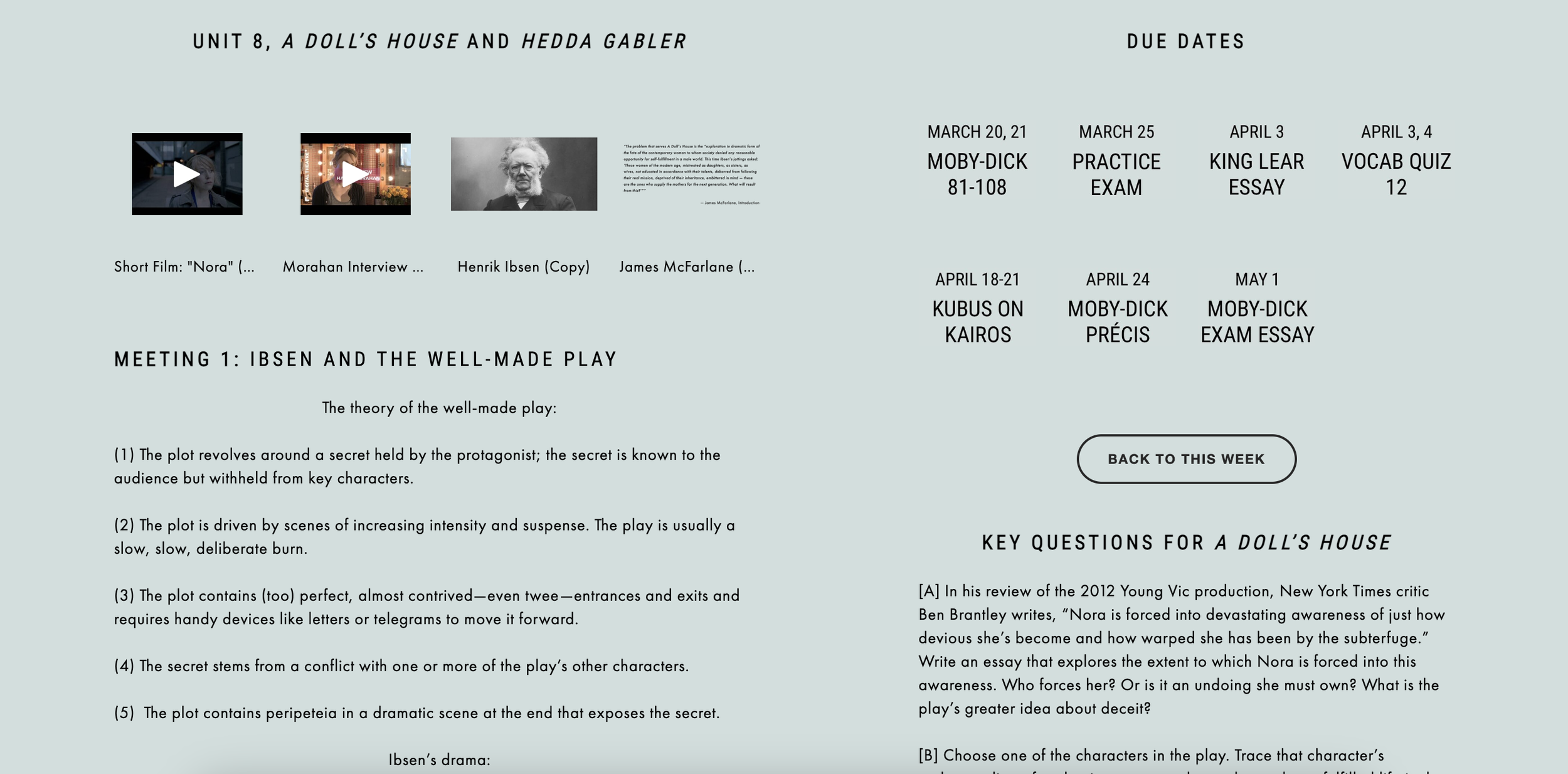unit 5, tolstoy’s the death of ivan ilyich
meeting 1: Ivan ilyich, chapter 1
(1) How did each reading go? How long did it take you? What are your impressions of reading Tolstoy? Share your passage that’s emblematic of Tolstoy’s style, according to Nabokov.
(2) Let’s make a list together of the various responses to Ivan Ilyich’s death. What is Tolstoy showing us at the outset? Are there structural advantages to beginning his novella after Ivan has already died? What do we learn about Ivan?
(3) Let’s perform a close reading of the two paragraphs on pages 3-4 as a group. How does Tolstoy’s play with perspective?
(4) Silently re-read from the middle of page 5 (“Come while it hasn’t started yet…”) to the bottom of page 7. Here Praskovya Fedorovna asks Pyotr Ivanovich to accompany her into a private room so she can question him about pension details. Treat the passage like a prose analysis, in which you analyze the narrator’s use of techniques such as point of view, detail, tone, word choice, and syntax in order to characterize the complex interaction between Pyotr and Praskovya.
If time permits, we’ll read a strong prose analysis response on this particular passage.
NB: One sign of a writer’s skill and command is the artistic use of details. It’s a way of concentrating language, of showing, of rooting meaning and suggestion in the concrete world of the story. Recall my favorite detail from Hemingway earlier this semester.
Homework: (1) Read sections 42-48 of James Wood’s chapter on literary detail. As you read the next 2 chapters of the novella, consider the simple and concrete meaning and function of one of Tolstoy’s literary details. Is your detail specific for specificity’s sake? How does that detail resonate the novel’s “larger meanings,” that buzz word for theme. Good details encode theme, enrich theme, make theme pulse.
(2) Read Chapters 2 and 3 of The Death of Ivan Ilyich. Walker, Siller, Amaya, Daniel, Drouilhet, and Hernandez-Molina will help me teach those chapters.
meeting 2: Ivan ilyich, chapters 2 and 3
Sentence 1 of chapter 2 outlines the thesis of the latest section: “The past history of Ivan Ilyich’s life was most simple and ordinary and (therefore) most terrible.” How does Tolstoy prove it? What details pulse to help him make his case?
Homework: Read chapters 4-6.
meeting 3: Ivan ilyich, chapters 4, 5, and 6
Today we’ll continue our movement through Tolstoy’s novella a little more organically though not haphazardly. But first we’ll take the quiz. If there’s time:
Homework: Read chapters 7-9.
MEETING 4: ivan ilyich, chapters 7, 8, and 9
Sit today with your CHAVRUSA.
With your chavrusa, you’ll discuss one aspect of each of the three chapters: Gerasim, the contrast between Ivan’s thoughts and words, and the conversation Ivan has with his soul.
In the second half of class, we’ll practice together a prose analysis with a passage from Tosltoy’s novella.
Homework: (1) Finish Ivan Ilyich.
(2) Read and annotate the passage from Dalton Trumbo’s Johnny Got His Gun.
MEETING 4: IVAN ILYICH, CHAPTERS 10, 11, AND 12
We’ll begin today by looking at a few of the thesis statements from last class before turning to the final three chapters of Ivan Ilyich. Finally, to continue preparing for the timed prose analysis, we’ll review the 2007 prompt and score three student responses.
———
meeting 1: FRQ3 Debrief
Sit today with your CHAVRUSA.
Today is a day to debrief the FRQ3s from last class. Let’s begin by looking back at the prompt and listing all of the different ways into the prompt. Then we’ll look at one very successful response.
With your chavrusa, take an inventory of your essay:
Homework: Continue working on your Iliad essay. You’ll have part of the next class period to work on your essay, so bring any materials you’ll need.
meeting 2: Iliad drafting day
Today you’ll have the period to work on your Iliad draft.
Homework: (1) Remember your Iliad essay is due the Monday we return. Please post it to turnitin.com by 8AM. Bring a paper copy of the essay to class.
(2a) Read Chapter I of Tolstoy’s novella The Death of Ivan Ilyich. The slim volume was provided to you in your textbook delivery. If for some reason you do not have it, you can find one here.
(2b) After reading Chapter I, consider the following quote from Vladimir Nabokov from his lectures on Tolstoy: “One peculiar feature of Tolstoy’s style is what I shall term the ‘groping purist.’ In describing a meditation, emotion, or tangible object, Tolstoy follows the contours of the thought, the emotion, or the object until he is perfectly satisfied with his re-creation, his rendering. This involves what we might call creative repetitions, a compact series of repetitive statements, coming one immediately after the other, each more expressive, each closer to Tolstoy’s meaning. He gropes, he unwraps the verbal parcel for its inner sense, he peels the apple of the phrase, he tries to say it one way, then a better way, he gropes, he stalls, he toys, he Tolstoys with words.”
(2c) Read Chapter I again, more slowly and lovingly this time, with Nabokov’s quote in mind: Can you find an emblematic passage of Tolstoy “unwrapping the verbal parcel” or “peeling the apple of the phrase”? Enjoy the gift, guys, of being able to read this amazing novella in small sections slowly; Tolstoy has much to show us.
due DATES
FALL FINAL EXAM
Part A: Iliad Process Essay, 50% of Final Exam + 1 Major Grade (11/27)
Part B: Modified AP Exam, 50% of Final Exam
(1) In-Class Prose Analysis (30 points) (12/7, 12/8)
(2) 40 MC Questions (40 points) (12/18)
(3) Poetry Analysis (30 points) (12/18)
CURRENT TEXTs TO HAVE DAILY
syllabus
cyclical vocabulary and sentence composition assignment
writing assignments
2022-2023 UNITS
war and peace central
It seems even Tolstoy didn’t quite know what War and Peace is: “It is not a novel,” he said, “still less an epic poem, still less a historical chronicle. War and Peace is what the author wanted and was able to express, in the form in which it is expressed.” And yet, it’s the first title we think of when we think of some of the greatest or most famous novels ever written. Whatever War and Peace is, it’s innovative: it plays with multiple languages, moves from battlefields to palaces to country estates, combines historical figures like Napoleon and Kutuzov with fictional characters like Bolkonsky and Rostov, folds in bloody battles to scenes of great personal strife and triumph, and changes narrators at will. That’s innovation. Whatever War and Peace is, it’s human: Tolstoy writes no archetypes, but people; no heroes, but soldiers; no villains, but sinners; no pillars of grace, but kind-hearted, flawed characters. That’s human. And whatever War and Peace is, it’s big: With almost 600—yes, 600—named characters, more than 1300 pages, multiple shifts in narrative voice, oscillations between scenes of aristocratic drama and the history of the Napoleonic Wars and some of Tolstoy’s personal philosophy, it’s no wonder Henry James famously called War and Peace “a big, loose, baggy monster.”
Once a month, a small group of us will have a meeting to discuss the next section of the novel, spending a few consecutive days after school with conversation, food, and drink. I hope it’ll be something you really enjoy despite the obstacles of the novel. But don’t let those obstacles prevent you from working through it. Look, I get it: the names are hard, and like I said, there are a lot of them. And look, I get it: Looking at the footnotes to translate the French is annoying. And look, I get it: there are some parts that are just plain dull. It’s okay. Sometimes long-form fiction will be like that. But you’ll do your work, anyway, like the great student and person you are. There are many reasons to set this book down and move on with your life, but there are more reasons—some you may not understand for a few years—to continue working your way through. It’s a work of art filled with beautiful characters, intricately woven threads of plot, thrilling scenes, compelling relationships, people to root for and against. The natural barriers of the novel are nothing compared to the reward on the other side. You’ll be just fine—better than fine, really. And you’re reading in a community of like-minded readers with great opinions to encourage you through it.





